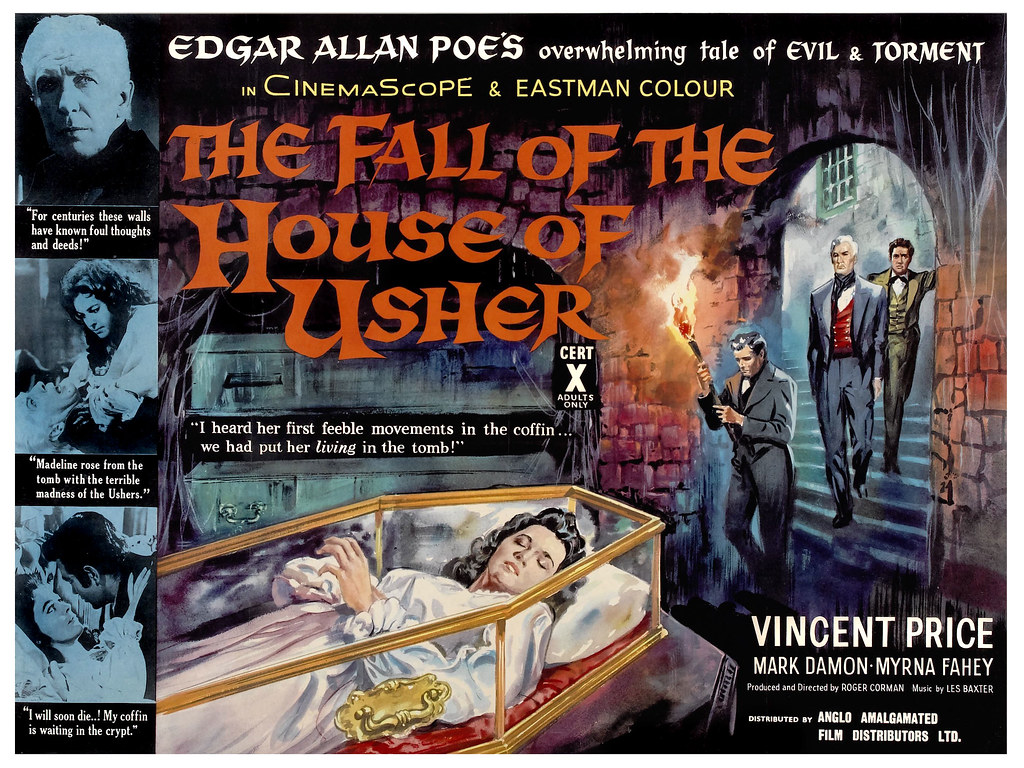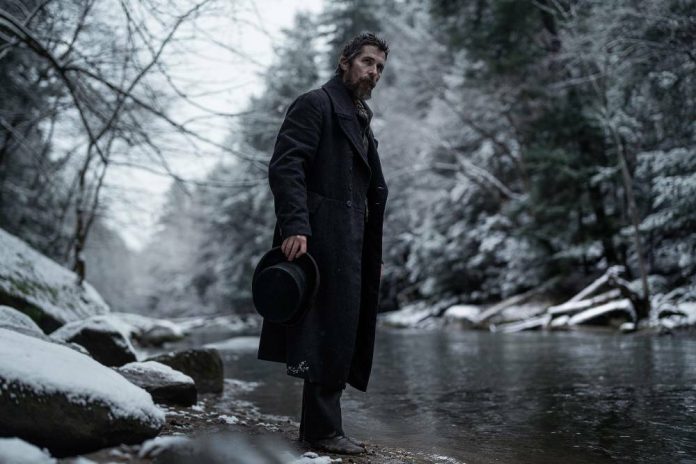With The Pale Blue Eye coming to Netflix later this year, it’s a great time to be a fan of Gothic horror. But how does such a distinct genre translate to the big screen?
A few weeks ago, Netflix released the teaser-trailer for an adaptation of Louis Bayard’s 2003 novel The Pale Blue Eye. The story, for those that don’t know it, is a classic Gothic mystery set in the 1830s, lifting a lot from the style of the father of Gothic literature Edgar Allan Poe—indeed, Poe is featured in the story as a young cadet, to give a sense of what the book owes to the prolific 19th-Century writer.
To adapt a writer in the way that Bayard has done is to assume a set of specific characteristics that typify the writer in general. With Poe this is easy, given how much of the Gothic genre, arguably the most solidly definable genre, we get from his writing. When this is translated to screen, it is merely an extended laudation of the writer’s oeuvre.
But how have Bayard and writer-director Scott Cooper gone about adapting Poe’s writing—or at least Poe-esque writing—to screen? How has it been done in the past? What about Poe’s writing makes it so adaptable or unadaptable? Being so dense in meaning, there are certainly some parts of Poe’s prose that flourish on screen, yet there are also some that should definitely remain on the page.
Poe’s prose is by nature very evocative. His descriptions often dwell on how reality is perceived, through the eye of a guilty murder in The Tell-Tale Heart, or a depressed man in The Fall of the House of Usher, rather than accurate descriptions of setting or character. Thus, there is an interiority that flows throughout his work, that seeks to use human emotions in reaction to violence, rather than the object of violence, to explore the complexity of human self-destruction. To show acts of violence objectively would be to put too much control over judgement in the hands of the reader, which would disrupt the “unity” of the piece, something we will get on to. However, despite this, many film adaptations of his work have focused their horror purely on this objectivity of violence, instead of exploring the complexity of emotions that set its foundations.

The first major on-screen adaptations of Poe’s literature came arguably in 1934’s The Black Cat. Directed by Edgar G. Ulmer and starring Bela Lugosi and Boris Karloff, The Black Cat fits nicely into the trend of Universal Gothic horror that was rampant during the 1930s and 1940s. In this instance, one might suggest that Poe’s work was being used solely for its abjectly horrific stories—using the typification of cats as sly and mysterious to make the feline “forget you ever saw ‘Frankenstein’ or Dracula’”—rather than focusing on how human actions are often self-destructive and causing paradoxes of fear and anger. For example, in the short-story, the cat is a vehicle for such emotions, only becoming a horror archetype in the eyes of a guilty man.
However, more recently we have seen a move towards focussing on the interiority of Poe’s writing. Being based on an unfinished manuscript, Robert Eggers’ The Lighthouse (2019) builds on the limited themes of isolation and paranoia that can be found in Poe’s last ever piece of writing. Not only that, but the self-destruction, madness, and ethereality that defines Poe’s work is portrayed brilliantly throughout the film, using the aesthetics and literal spatio-temporal changes in point-of-view that film provides over prose to the fullest extent (for example, the film’s grainy, black and white look, in a claustrophobic 1.19:1 aspect ratio, sets the foundation for the raw human suffering that prevails). Eggers realises that the extent of Poe’s horror goes beyond abject violence, lying more in how and why humans are pushed to such extremes, which is arguably leagues more horrifying. Aside from this, the use of aesthetics and the various ways to create tone in film resonate with a “unity” of storytelling that Poe advocated throughout his career.
“Down, down, down came the hot, thrashing flurry…”
Edgar Allen Poe (Harry Melling)
Much of Poe’s style sparked from the literary theories he devised in his early career as a critic. His main focus, under the umbrella term “unity of effect”, was that obvious meaning in works is when they cease to be art, favouring the more subtle meanings that lie just under the surface. Thus writers must meticulously structure their stories to keep certain ideas strong throughout. One of the main differences between the methodology of film in comparison to prose is that everything must be planned; because the meaning of prose exorcises itself solely on a page, tangents can often go unnoticed and don’t hinder the strength of the narrative. In filmmaking, much like short-stories, because every aspect of the narrative must be exorcised in the form of rigorous technical planning and execution, there is more of a focus on creating this ‘unity of effect’, as a wasted scene or line of dialogue is always costly. So, it could be said that Poe’s literary theory, of which he applied frequently to his own work, can sometimes work better in film than it can in prose.
What really matters, however, is seeing this in action, as seen in The Lighthouse, and in this teaser. From the very start, we get a sense that the film intends to utilise all five senses to create a Proustian image of Victorian America. The soundscape is made up of a smorgasbord of low moans, the tapping of wood and what sounds like the crunching of bones. Not only are these frequent images in Poe’s work, but their visceral nature creates the chill that matches the images of the West Point Academy trying to survive in winter-stricken landscape, in the midst of a murder mystery. We see West Point, New York in the dead of snowy October, where survival is an organised effort. A man stands on the edge of a cliff, mortalised by the prospect of being engulfed by the void; a woman struggles to walk through the snow, the mist around her face signifying the loss of heat from within. The snow that surrounds the characters acts as both a reminder of their futility, and a symbolic backdrop of purity and innocence over which the darkest human desires are exposed.
It is clear from this early look at Cooper’s new horror mystery that an exploration of humanity as a vehicle for horror will be the centre of the film. With a star-studded cast of Christian Bale, Charlotte Gainsbourg, Gillian Anderson and Harry Melling as Poe (among others), one has faith in the skills both in front and behind the camera that The Pale Blue Eye will honour Bayard’s novel, and therefore the classic macabre of Poe.
Words by Oisín McGilloway
